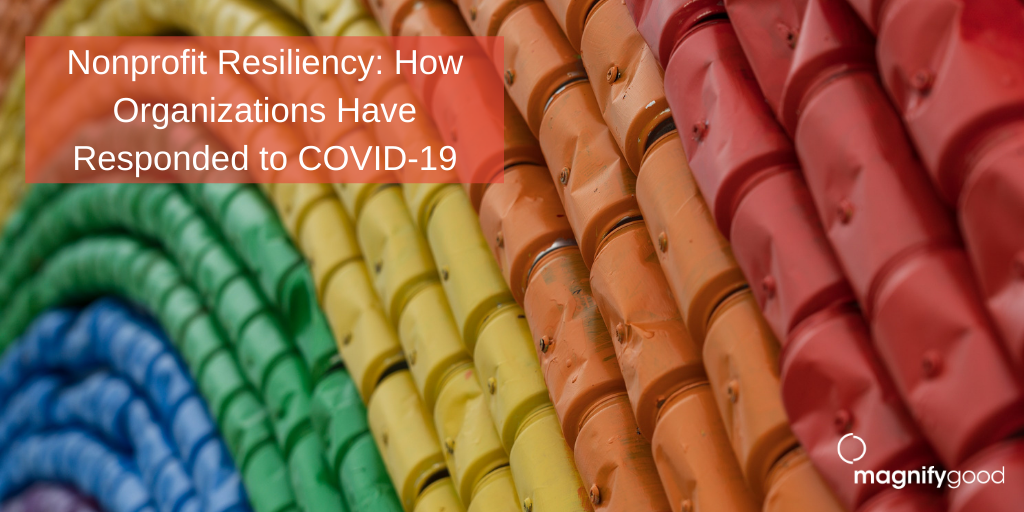There’s no doubt that 2020 has been an incredibly tough year for everyone. Our everyday lives have changed, plans canceled and so many of us continue to remain distant from our loved ones.
But even as our world stopped, nonprofits around the globe and across communities have continued serving the people who need them most.
When COVID-19 put a pause on all in-person engagements — with uncertainty on when they will resume — nonprofit organizations were forced to think and move quickly in readjusting their plans and strategies.
Throughout the pandemic, we’ve seen nonprofits rise to the occasion, using technology to respond to the unexpected challenges with resilience, especially when it comes to those serving our community every single day.
Circus Arts Conservancy
The Circus Arts Conservancy provides a lot of services to our community. From classes and camps focused on performance and skill-building, to its production of live events that are fun for all ages, the CAC had a lot to juggle when the pandemic hit. Understanding the need to be flexible in any situation, CAC leadership quickly began devising a plan to continue serving the community. The team launched CAC Connects, an online hub for all things ‘Circus.’
Beyond launching CAC Connects, the Circus Arts Conservancy swiftly adapted to put on “One World Circus” — a live event featuring circus performances from performers around the world. While the event was free to all, the CAC leveraged the opportunity as an additional way to raise funds amid a global shutdown that has notably impacted nonprofit fundraising efforts.
Through all of this, the CAC was successful in its mission to “keep the circus arts alive and thriving.”
Tidewell Hospice
Tidewell’s mission is to provide quality care and make life brighter — for those who need it most. Amid a pandemic that left many across the world in situations of isolation, Tidewell was prompted to step up and leverage its existing resources and programs to provide care to anyone in the community who needed it.
One of Tidewell’s many complementary services is providing music therapy to its residents. As the region shut down and visitor restrictions were placed on assisted living facilities statewide, Tidewell focused on bringing care to those now isolated from their family and friends, in whatever way they could. Music therapist Mark Russo traveled to each patient just to perform outside of front doors and windows, with the hope of providing a little bit of comfort and normalcy. Additionally, he turned to Facebook Live and broadcasts and even left recorded messages for patients.
The Patterson Foundation
Each year, the Suncoast Campaign for Grade-Level Reading exceeds the community’s expectations with its Suncoast Summer Reading Challenge. A collaborative effort between the Campaign, businesses, summer camps and volunteers, the summer learning engagement incentivizes students to continue reading throughout the summer to avoid the “summer slide.” While this year may have put a dent in the in-person fun, the Suncoast Campaign didn’t let that deter them from keeping kids engaged in reading all summer long.
Launching “This Book is Cool!” — a virtual reading series that could be used throughout the summer and beyond, the Suncoast Campaign produced 100 webisodes, featuring 100 activities for more than 5,302 participating children in our region. The total books read? 94,383!
The Suncoast Campaign for Grade-Level Reading not only met this moment in a fun and creative way, they were able to build a collection of meaningful content to be shared far and wide — and well after the summer ends.
Having worked closely with these organizations, we understand that they have long demonstrated a commitment to using fresh and creative ways to support the community. Technology has presented a challenge for nonprofits slow to adapt to the digital landscape, but for those who do, the positive results are undeniable.
While these are just a few examples of nonprofit resiliency amid COVID-19, organizations across the world are making these kinds of shifts to their programs and strategies. It’s hard to know when — or if — things will get back to the way they were before the COVID-19 pandemic, but this moment must be met with agility and the willingness to adapt using digital technology.
We understand that digital adoption can be intimidating. If you’re not sure where to start when embarking on this necessary journey, we’re here to help. You can schedule a quick 30-minute call with us here.
Photo Credit: Nick Fewings via Unsplash



